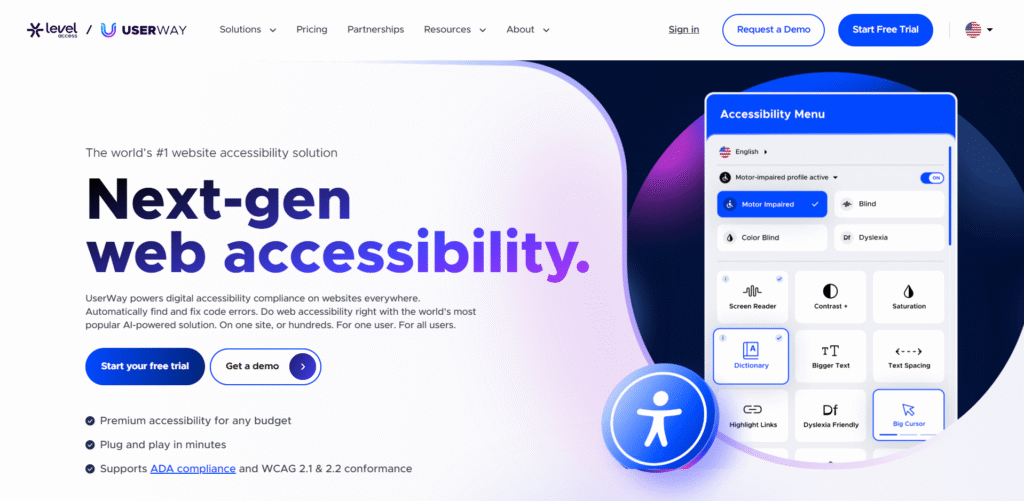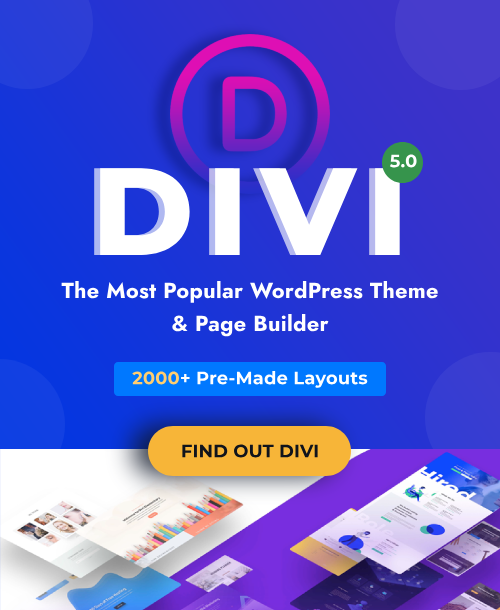We think ADA-compliant websites should turn out as a norm to welcome everyone, but unfortunately many still behave like shops with the door bolted. The Americans with Disabilities Act (ADA) demands that your online presence must be accessible to people with all kinds of disabilities, and that’s not negotiable anymore. Beyond doing the right thing, accessible sites rank better, avoid legal headaches, and serve a lot more customers.
If the term “accessibility” makes you anxious, relax. You don’t need to become an accessibility engineer overnight. Tools such as UserWay ADA compliance make a big chunk of the work practical, fast, and affordable to create an ADA-compliant website.
In this blog you will be exploring a step-by-step guide to ADA compliance with UserWay and the Americans with Disabilities Act Checklist 2025, along with adding the UserWay widget to your website.
What is ADA website compliance?
In simplest terms, an ADA-compliant website works for people who use assistive tech. This implies people with disabilities rely upon screen readers, keyboard navigation, captions, or alternative input devices when they visit your website to understand the context of your content.
In practical terms, your site must:
- Allow users to tab through content and interact without using a mouse.
- Provide clear text with good contrast:
- Provide captions and transcripts for multimedia.
- Use descriptive alt text for images and clear labels for forms.
- Treat accessibility like adding a ramp, signage, and clear lighting to a storefront, only online.
Why Does ADA Compliance Matter in 2025?
- It protects your business against expensive lawsuits.
- It ensures equal access for all users and boosts brand reputation.
- Compliant sites rank higher in search engines and reach a larger audience.
Step-by-Step Guide to ADA Compliance with UserWay
Below is the complete breakdown of the ADA website compliance guide, taking care of the given steps:
Step 1: Audit Your Website for Accessibility
A website accessibility compliance audit should be the first step. Quick scans and manual checks are provided by UserWay ADA compliance, which can identify inaccessible navigation, low contrast, and missing alt text.
Step 2: Review the Website ADA Compliance Checklist 2025
Concentrate on important enhancements:
- For readable text, the color contrast must be at least 4.5:1.
- Button and image descriptions must be accessible.
- Forms and navigation must be keyboard-friendly.
- No images should flash.
Step 3: How to Add UserWay Widget to Your Website
In order to meet the majority of accessibility requirements, incorporate the UserWay widget. Install the official app or plugin on Wix, Shopify, or WordPress. Following simple instructions, add the UserWay script to your header on custom sites
Step 4: Customize the Widget and Accessibility Settings
Log in to change the accessibility and widget configurations in order to modify accessibility profiles and features and align the UserWay widget with your brand.
Step 5: Monitor, Test, and Stay Compliant
To ensure that you continue to adhere to ADA compliance standards, use both automated scans and manual audits. For practical feedback, include users with disabilities.
Pro Tips for Maintaining website accessibility compliance
- Revise documents and content to comply with accessibility standards for websites.
- Provide audio transcripts and caption videos.
- Publicize only resources and PDFs that are accessible.
- Make use of skip navigation links and provide frequent team training.
Why Choose UserWay for ADA Compliance?

The main advantages of using UserWay ADA compliance are:
AI-powered accessibility:
UserWay’s widget automatically finds and fixes 100-plus accessibility problems in real time using cutting-edge AI. This ensures an ADA-compliant website accessibility without constant manual intervention, lowering the technical load and assisting in its continuous compliance with WCAG 2.1 and 2.2 standards.
Widget customization:
The UserWay widget can be made to fit the unique accessibility requirements of your audience as well as the design of your website. To provide users with disabilities a customized experience, you can change features like text size, contrast modes, and navigation options.
Automated and manual audits:
To give you a complete picture of your website’s accessibility condition, UserWay ADA compliance combines professional manual audits with automated scanning tools. Instead of being a one-time solution, this blend guarantees that compliance is comprehensive and sustained over time.
Continuous monitoring and alerts:
Proactive compliance management is made possible by the platform’s continuous monitoring, which includes comprehensive reports and alerts to inform you of any new accessibility problems brought on by website modifications.
Broad platform compatibility:
UserWay facilitates smooth integration, making it simple to implement ADA-compliant website measures across multiple environments, regardless of whether your website is powered by WordPress, Shopify, Wix, or custom code.
Supports numerous regulations:
In addition to the Americans with Disabilities Act (ADA), UserWay offers a comprehensive solution for multinational digital assets by assisting with website accessibility compliance with Section 508, the European Accessibility Act (EAA), and other international accessibility standards.
Beyond websites:
UserWay creates certified accessible formats to guarantee that all digital content is usable, extending accessibility solutions to documents like Office files and PDFs. Because of its AI automation, customization flexibility, legal support, and ongoing assistance, UserWay is a useful tool for businesses that are committed long-term to making websites ADA compliant and digitally inclusive.
Website ADA Compliance checklist 2025
To ensure complete ADA website compliance, use this short checklist:
- Keyboard-only navigation functions flawlessly.
- Images must have descriptive alt text, color contrast must comply with WCAG 2.1 AA standards.
- Form fields must be clearly labeled, videos have captions, and screen readers can read the web content.
- The widget should be able to load correctly on mobile devices.
- Many of these components are automated by UserWay, but manual verification makes sure nothing is missed.
How to Verify Your ADA Compliance
Once your site is set up, use these techniques to check it again:
- The UserWay Accessibility Scanner provides comprehensive ADA-compliant website status reports.
- Google Lighthouse Audit is a website accessibility compliance score tool that can be integrated into Chrome.
- WAVE Evaluation is a powerful free web-based tool that keeps a check on the visual accessibility of your website.
Make sure to aim for an accessibility score of greater than 90% for every tool.
Common Mistakes To Avoid
- Don’t rely solely on the widget without doing any manual testing.
- Don’t forget to verify embedded content or third-party plugins.
- Mobile optimization is mandatory. Try not to ignore it.
- Assuming “ADA compliant website” entails a one-time setup is incorrect. Keep a constant monitoring of its updated features to ensure smooth website accessibility for disabled people.
Final Thoughts
Respecting your visitors is just as important as adhering to the rules when it comes to gaining a UserWay ADA compliance for your website. The website accessibility checklist for 2025 is a must to take into consideration.
Making your website accessible to all users is easy, quick, and inexpensive with this UserWay ADA website compliance guide. This tool makes sure your online presence is welcoming, both legally and morally, regardless of how big or small your company is.





